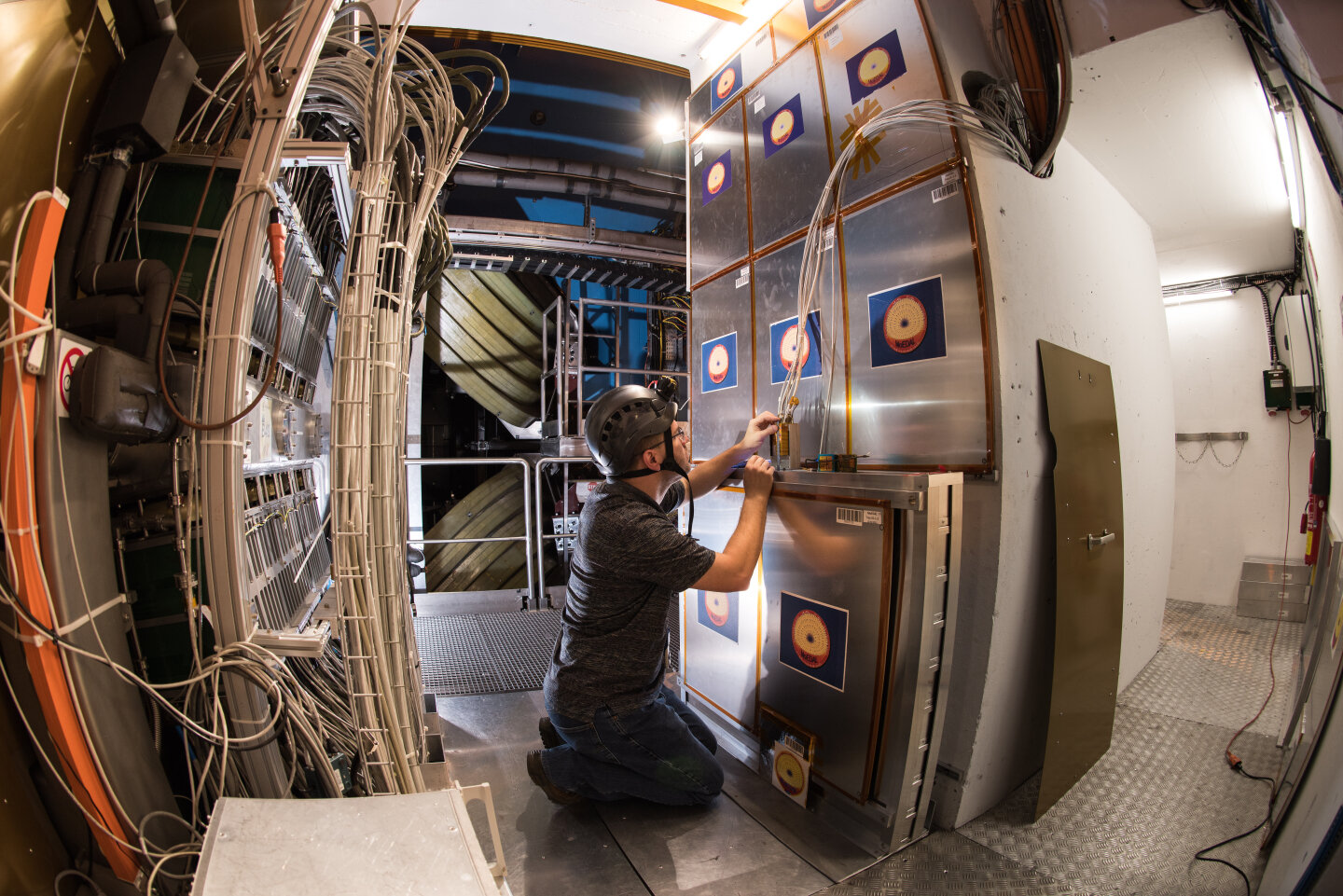MoEDAL detector. Credit: CERN
x to close
MoEDAL detector. Credit: CERN
The late physicist Joseph Polczynski once said that the existence of magnetic monopoles is “one of the surest bets that can be made about physics that has yet been seen.” In the search for these particles, which are magnetically charged and predicted by several theories that extend the Standard Model, the MoEDAL collaboration at the Large Hadron Collider (LHC) has yet to prove Polchinski right, but its latest findings mark an important step forward. . Forward.
The results, in two papers published in arXiv The preprint server significantly limits the search window for these hypothetical particles.
At the LHC, magnetic monopole pairs can be produced in interactions between protons or heavy ions. In collisions between protons, they can be formed from a single virtual photon (Drell-Yan mechanism) or from the fusion of two virtual photons (photon fusion mechanism). Magnetic monopole pairs can also be produced from the vacuum of massive magnetic fields that are nearly lost in heavy ion collisions through a process called the Schwinger mechanism.
Since it started taking data in 2012, MoEDAL has achieved several things, including conducting the first searches at the LHC for magnetic monopoles produced via the photon fusion mechanism and via the Schwinger mechanism.
In its first recent study, the MoEDAL collaboration looked for monopoles and high electric charge objects (HECOs) produced via Drell-Yan and photon-fusion mechanisms. The search was based on proton-proton collision data collected during LHC run 2, using the full MoEDAL detector for the first time.
The complete detector consists of two main systems sensitive to magnetic monopoles, HECOs, and other hypothetical highly ionized particles. The former can permanently record the trajectory of magnetic monopoles and HECOs without any background signal from standard model particles. These trajectories are measured using optical scanning microscopes at the INFN Bologna.
The second system consists of approximately one ton of trapping volume designed to capture magnetic monopoles. These trapping volumes—which make MoEDAL the only collider experiment in the world that can definitively and directly detect the magnetic charge of magnetic monopoles—were measured at ETH Zurich using a special type of magnetometer. SQUID names are scanned to search for trapped monopoles that they may contain. .
In their most recent scan of the trapping volumes, the MoEDAL team found no magnetic monopoles, or HECOs, but set limits on the mass and production rate of the particles for different values of particle spin, which is the intrinsic form of angular momentum.
For magnetic monopoles, mass bounds were set for magnetic charges from 1 to 10 times the basic unit of magnetic charge, the Dirac charge (gD), and the existence of a monopole with a mass of 3.9 trillion electron volts (TeV) was ruled out. .
For HECOs, mass limits were set for electric charges from 5e to 350e, where e is the electron charge, and HECOs with masses up to 3.4 TeV were ruled out.
“Expanding MoEDAL’s search for monopoles and HECOs will allow this collaboration to explore a huge part of the theoretical ‘discovery space’ for these hypothetical particles,” said MoEDAL spokesman James Pinfold.
In their second recent study, the MoEDAL team focused on the search for monopoles produced via the Schwinger mechanism in heavy ion collision data taken in Run 1 of the LHC. In a unique effort, the decommissioned section of the CMS test beam tube was scanned for trapped monopoles instead of the trapping volumes of the MoEDAL detector.
Once again, the team found no monopoles, but set the strongest mass constraints to date for Schwinger monopoles with charges between 2gD and 45gD, ruling out the existence of a monopole with a mass up to 80GeV.
“The critical importance of the Schwinger mechanism is that the production of composite monopoles is not suppressed compared to elementary monopoles, as is the case for Drell-Yan processes and photon fusion,” explains Pinfold. Therefore, if monopoles are composite particles, this search and our previous Schwinger monopole search may be the first opportunity to observe them.
The MoEDAL detector will soon be joined by the MoEDAL Apparatus for Penetrating Particles, or MAPP for short, which will allow the experiment to cast a wider net in the search for new particles.
more information:
A search for highly ionized particles in pp collisions during the LHC-2 run using the full MoEDAL detector. arXiv (2023). DOI: 10.48550/arxiv.2311.06509
b. Acharya et al., A MoEDAL search in a CMS beam tube for magnetic monopoles produced via the Schwinger effect, arXiv (2024). DOI: 10.48550/arxiv.2402.15682
Magazine information:
arXiv
#Large #Hadron #Collider #experiment #zeros #magnetic #monopoles
